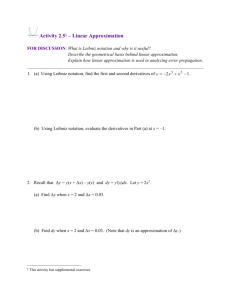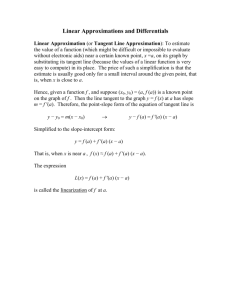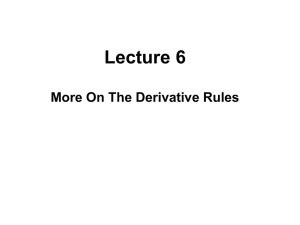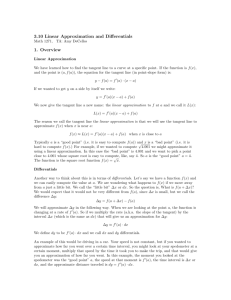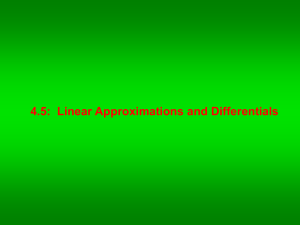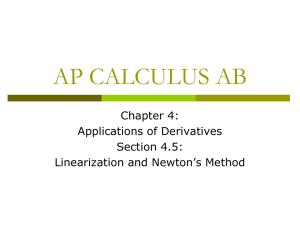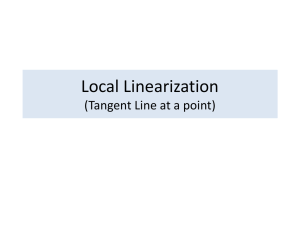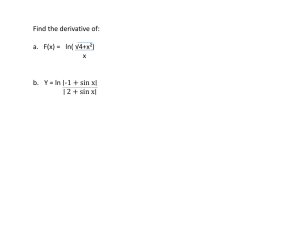Linear approximations
advertisement
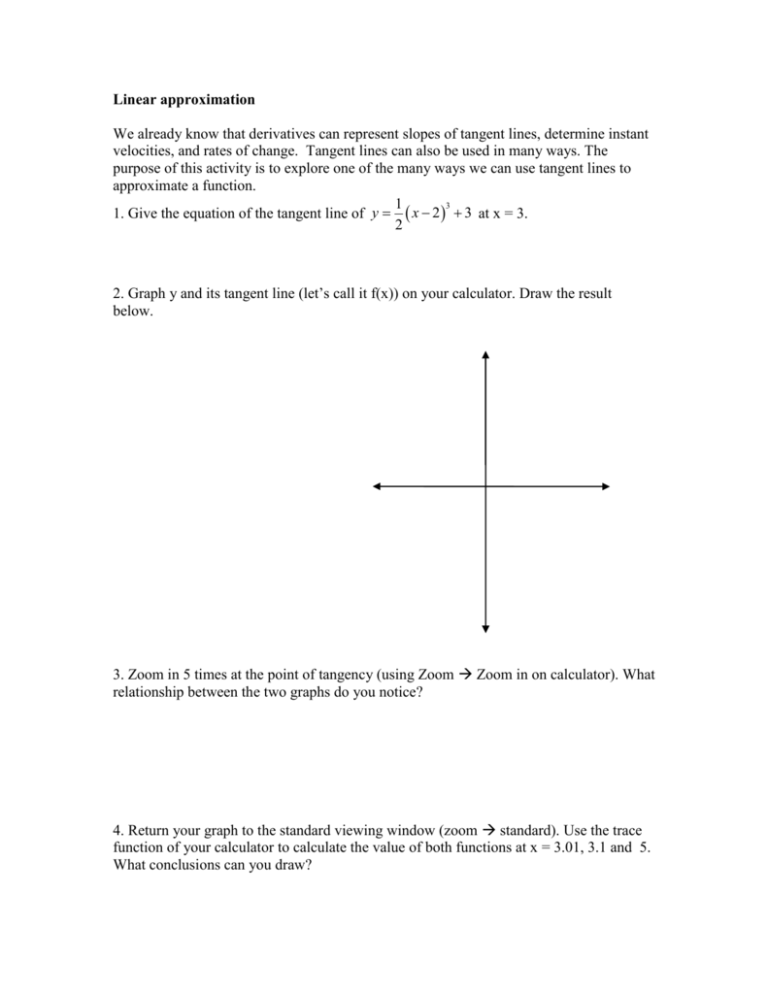
Linear approximation We already know that derivatives can represent slopes of tangent lines, determine instant velocities, and rates of change. Tangent lines can also be used in many ways. The purpose of this activity is to explore one of the many ways we can use tangent lines to approximate a function. 1 3 1. Give the equation of the tangent line of y x 2 3 at x = 3. 2 2. Graph y and its tangent line (let’s call it f(x)) on your calculator. Draw the result below. 3. Zoom in 5 times at the point of tangency (using Zoom Zoom in on calculator). What relationship between the two graphs do you notice? 4. Return your graph to the standard viewing window (zoom standard). Use the trace function of your calculator to calculate the value of both functions at x = 3.01, 3.1 and 5. What conclusions can you draw? 5. Are the f(x) values an overestimate or an underestimate? Use the graph to determine the answer. Is there a way we could use derivatives to answer this question? 6. Describe the special property of tangent lines that you have discovered in this activity. Make sure to note any problems you may encounter when using this method. In general we use the tangent line at (a, f(a)) as an approximation to the curve y = f(x) when x is near a. An equation for the tangent line is y f a f a ( x a) and the approximation f x f a f a x a is called the linear approximation or tangent line approximation of f at a. The linear function whose graph is the tangent line , that is, L x f a f a x a is called the linearization of f at a. 6. Use linear approximation to estimate the value of f(0.4) if f x 1 sin x . a) Find the linear approximation centered at x = 0. b) Use it to approximate f(0.4) c) Is this an overestimate or an underestimate? Use the graph and derivative to determine the answer. 7. Suppose that after you stuff a turkey and you then put it in a 350ºF oven. After an hour the meat thermometer indicates that the temperature of the turkey is 89 ºF and after 2 hours it indicates 135 ºF. Predict the temperature of the turkey after 3 hours. Is this an over or underestimate? Problem Set 1. Use a linear approximation centered at 2 to estimate j 2.14 if j t 2t 3 6t 2 . 2. If g 1 3 and g’(1) = -3, use a linear approximation to estimate g 1.25 3. If h(x) is a continuous and differentiable function and contains the values given in the table below, estimate h(3.2) with a linear approximation. x h(x) -1 -6 2 -4 3 1 7 14 4. Suppose that the only information we have about a function f is that f(2)=3 and the graph of the derivative is shown. Hint: for part b draw tangent at x =2 to estimate its slope a) Use a linear approximation to estimate f(1.9) and f(2.1). b) Are your estimates in part a over or under estimates? Explain. 5. If f(x) = cos x, estimate the value of f(x) for values near . 6 . 6 b. Use the linear approximation to estimate the values of cos 0.5, cos 0.75, cos 1, and cos 2. Are these under or overestimates? Which of your estimates are the most accurate? Why? c. Graph the curve y = cos x and its tangent line at x = . Use the graphs to explain 6 your results from part b. a. Find the linear approximation for f at x =
